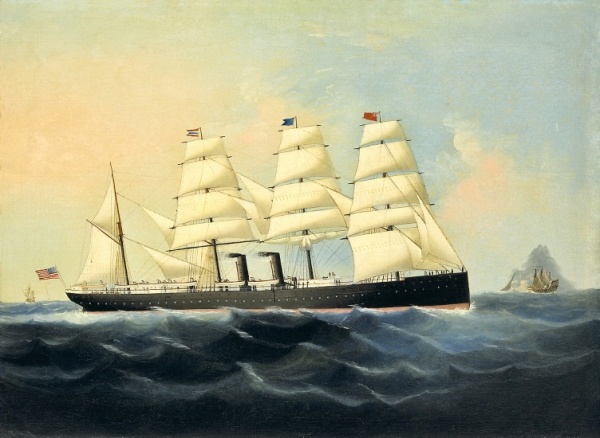Travels to Asia
At the end of the 19th century, the world was living through an era of industrial transition where steam vessels and railroads were used as means of transport along with carriages, animal backs and walking.
The route to Asia started in the port of Valparaiso in 1880 when Pedro Del Rio decided to set out on a trip to a distant destination, adventure and danger to leave behind the pain of a family tragedy.
He planned a trip around the world so Japan, China, Singapore, Indonesia, Sri Lanka, India and the Middle East were part of the journey.
The original plan considered travelling up the northern Pacific coast to San Francisco, USA, but he was forced to change it when he encountered the Pacific War in Arica city (1879-1883). His patriotic spirit did not affect his personal goals. He decided to continue with his tour around the world charting a new route from the southern Pacific Ocean coast to the Strait of Magellan and to the Atlantic Ocean to the north.
On the eastern coast of the Americas he visited Argentina, Brazil, The Caribbean, United States and Canada. He disembarked in the port of New York and crossed North America by train to reach the port of San Francisco where he continued his original plan to sail the ocean towards the Asia Pacific.
He set sail on a transoceanic steamboat called “S.S. City of Tokio” towards Japan. During the first days of January, 1881, he arrived at an Imperial Japan that had already been consolidated as world power, open to foreign trade and in the midst of expansion and industrialization. Days after leaving Kobe, Japan, Pedro del Rio crossed the China Sea to meet an ancient empire. The Qing Dynasty (1644-1911) still reigned the Forbidden City of Beijing and the dowager Empress Cixi (18351908) exercised de facto power. The waning Manchu Dynasty tried to govern the increasingly powerful and fractious local leaders at the same time as it faced strong foreign pressure.
He landed in the ports of Shanghai, Hong Kong, Formosa (today Taiwan), Guanzhou and Macao, all main Chinese city-ports from southern China that were built under the European influence of the colonies that controlled them at that time. On foot or by rickshaw, a human-powered vehicle, he toured the wide avenues of the neighborhoods influenced by European architecture and of course, the narrow streets of the Chinese towns that could provide him with new treasures. In his own words, “the museum attracts me, fascinates me, like the many souvenir shops where despite the protests and jokes of my companions, I make good provision to increase the pieces of the Hualpen museum”.
Even before traveling, Pedro del Rio had already expressed his intentions to start a coin and newspaper collection from all the places he would visit on his first trip. Apart from collecting those items, he also added hotel bills, menus and all kinds of furniture and objects that accompanied him until his return and with which he started the museum. Only on his first trip, he visited almost three hundred cities and towns from diverse latitudes.
A program of the Chinese opera, which he attended in Shanghai, is preserved at the museum as well as handwriting on glossy red paper that shows the contact he had with the local culture. This is a point of view from this collector traveler who sought not only objects but also experiences.



